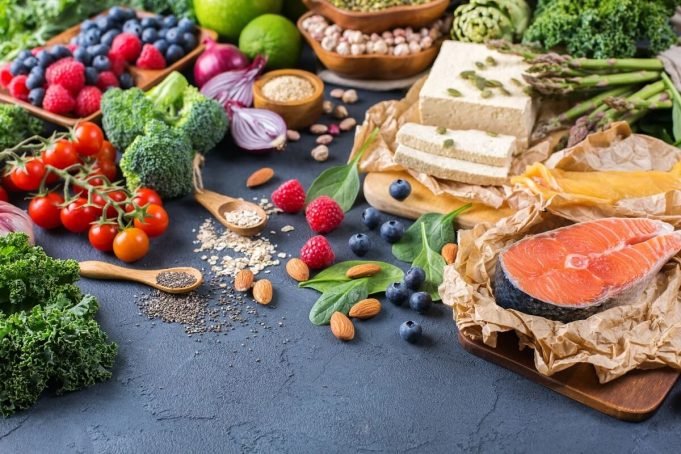Which Food Safety Practice Will Help Prevent Biological Hazards- Zarina Mohd, process project manager at Integrated Food Projects, discusses biological hazards in food production and emphasizes the significance of the processing stage during the production process.
Biological hazards are harmful organisms or substances produced by organisms, such as bacteria, viruses, yeasts, and molds. The consumption of these microorganisms frequently results in infection, poisoning, or even death. Prevention throughout the food production process is the most effective means of controlling biological hazards.
Major biological hazards
Bacteria ex:
Salmonella spp., Enterohaemorrhagic Escherichia coli, Campylobacter jejuni, Yersinia enterocolitica, Listeria monocytogenes, Vibrio vulnificus, Vibrio parahaemolyticus, Bacillus anthracis, Bacillus cereus, Staphylococcus aureus, Clostridium botulinum, Clostridium perfringens, Vibrio vulnificus
Virus ex:
hepatitis A virus, Norwalk viruses, Rotavirus
Parasites ex:
Toxoplasma gondii, Cryptosporidia, Giardia spp., Trichinella spiralis, Taenia solium, Anisakis spp.
What are the 4 types of food safety hazards?
The hazards to food safety are divided into four categories. Each category explains the nature of the food safety hazard and provides food handlers with an idea of the correct procedures required to control it. Threats to food safety may include any of the following:
- Biological
- Chemical
- Physical
- Allergenic
All agents that can cause foodborne illness or allergic reactions in consumers are represented by these food safety hazards. Depending on factors such as the level of contamination, the likelihood of occurrence, and the potential for harm, these food safety hazards can have a moderate or severe impact on public health.
Biological hazards in food
Among biological, chemical, and physical food hazards, biological hazards are the most common cause of foodborne illness. Pathogens, or harmful microorganisms such as viruses, bacteria, and parasites, may be involved in these dangers.
Salmonella and E. coli are responsible for some of the most infamous outbreaks of foodborne illness, making biological hazards an important consideration for businesses seeking to maintain a reputation for safety and dependability.
Biological Hazard Prevention
Implementing robust processing and storage strategies is the most effective way to protect customers from biological hazards. There must be steps taken prior to packaging to eliminate pathogens, such as thorough cooking or pasteurization of milk and juices.
The use of packaging technologies such as vacuum sealing during processing inhibits bacterial growth. Proper storage temperature management can drastically reduce microbial growth. Lastly, effective sanitation practices throughout the distribution chain will decrease food product cross-contamination.
Food Safety and Environmental Hazard Quiz
Food safety is the practice of preparing, handling, and storing food so as to prevent foodborne illness and injury. During their journey from farm to factory to the table, food products may encounter a variety of health risks along the supply chain. Consequently, safe food handling practices and procedures are implemented at each stage of the food production life cycle in order to mitigate these risks and protect consumers from harm.
As a scientific discipline, food safety draws from numerous academic disciplines, such as chemistry, microbiology, and engineering. Diverse schools of thought converge to guarantee the safety of food processing wherever food products are sourced, manufactured, prepared, stored, or sold. In this sense, food safety is a systemic approach to hygiene and responsibility that affects all aspects of the global food industry.
Chemical Hazards
The presence of harmful substances that occur naturally in food or are unintentionally added during processing identifies chemical hazards. Some chemical hazards include mycotoxins, sodium nitrate, and pesticides.
Food Manufacturing Standards
In the United Kingdom, almost every item on the shelves of grocery stores is supplied by large-scale food manufacturing industries. Various production steps, such as slicing and chopping, mixing, marinating, grinding, etc., may be involved in the creation of packaged foods. Because microorganisms cannot multiply on clean, dry surfaces, the hygienic design of equipment plays an important role in controlling microbiological safety, i.e. designed to be cleaned effectively and without difficulty.
There are numerous avenues that can be pursued when discussing biological hazards. I only hope that this blog has provided a clear understanding of the significance and efficacy of preventative actions in minimizing the impact of harmful organisms on the food production process. One example of equipment that supports this hygiene-first approach is the flat flex belts, commonly used in conveyor systems for their open structure, which promotes easy cleaning and reduces contamination risk. Their use helps facilities uphold rigorous hygiene standards while maintaining efficient production flow.
Prions
Similar to viruses, prions are small pathogenic proteins that require a living host in order to grow and survive. They were discovered relatively recently and are best known for causing bovine spongiform encephalopathy (mad cow disease), a fatal brain infection in cattle and other livestock.
The 1997 FDA regulations prohibit the use of animal protein in veterinary feed for cattle, sheep, and goats. 21 This pathogen cannot be detected by sight, smell, or taste; therefore, avoiding contaminated meats and heeding food warnings are the most effective ways to avoid exposure.
Sources
Principal sources of microbial contaminants in food are:
- animal guts: fecal contamination
- soil and water polluted by untreated waste manure
- cross-contamination:
– human contamination due to poor personal Hygiene, fecal contamination, and infection failure control (illness not reported)
– the spread of cross-contamination of food products processing environment due to poor/improper sanitation
What are the 7 kitchen hazards?
Seven of the most prevalent kitchen hazards are:
- Cross-contamination
- Physical injuries caused by equipment and implements
- Chemical contamination of food by accident
- Burn hazards
- Food contamination by physical objects like jewelry or hair
- Food spoilage caused by improper storage temperature
- Improper food preparation
Physical Hazards
Foreign objects found in food products constitute physical hazards. They are either naturally present in the item, such as stems in fruit, or not typically present, such as in hair or plastic. Generally speaking, unnatural physical hazards pose a greater health risk than natural physical hazards.
Physical Hazards Prevention
A thorough inspection of food and strict adherence to food safety regulations, such as Hazard Analysis Critical Control Point (HACCP), is essential for preventing physical hazards. Additionally, organizations can take proactive measures to eliminate the possibility of a physical hazard. Different materials can be used to produce light bulbs, for instance. Acrylic is both lighter and stronger than glass, and its fragments tend to be larger and blunter than those of glass.
Allergenic Hazards
The final and possibly most lethal dangers are allergens. In the United States, allergies are the sixth leading cause of chronic illness, with over 50 million people suffering from allergies each year. When the body produces an abnormal immune response to specific food proteins, allergic reactions occur.
Allergenic Hazards Prevention
Unfortunately, allergies cannot be prevented, but it is possible to reduce the likelihood of an allergic reaction. As long as companies implement proper sanitation practices and clearly label potential allergenic ingredients, allergic reactions will be minimized. Consumers are primarily responsible for preventing allergic reactions, but they can only do so effectively if businesses provide adequate sanitation and ingredient labeling.
How do you control significant food safety hazards?
Implementing controls in your food business
- Obtain a copy of your risk assessment and HACCP plan.
- Examine the combination of hazard and control measures to determine if they are aligned.
- Correct any inconsistencies and revise your documents in
- Implement any revised control measures in your food business as the fourth
What are 5 potentially hazardous foods?
- Any raw or cooked meat product
- Cut-to-order fruits and vegetables
- Seafood
- Lactic products
- Rice and noodles
Regulations and Laws
The Food and Drug Administration (FDA) and the United States Department of Agriculture (USDA) have enacted laws that aid in minimizing food safety risks and guaranteeing safer food safety practices. Thus, food safety practices have become substantially more robust and efficient.
What are food hazards?
A food safety hazard is anything present in food that has the potential to cause illness or injury to the consumer. Threats to food safety can be biological, chemical, or physical in nature.
How do identify food hazards?
The proper identification of food hazards is a component of the most prominent food safety management systems, such as the Hazard Analysis Critical Control Points (HACCP) system. Identification and analysis are proactive methods for mitigating the potential consequences of these safety hazards. The identification of hazards must be based on reputable and well-established sources, as public health depends on them.
Hazard Analysis Critical Control Point (HACCP)
The implementation of HACCP in 1997 shifted food safety practices away from the traditional “sight, smell, and touch” inspection to a scientific approach. The fundamental principles of HACCP provide a framework for analyzing biological, chemical, and physical risks along the supply chain.
This prevented outbreaks from occurring in the first place, as opposed to responding to them after the fact, and accelerated the technology used to manage food safety. HACCP has resulted in a significant decrease in foodborne illnesses.
How do you manage hazards?
To control workplace hazards and eliminate or reduce risk, the following steps should be taken:
- Identify the hazard by conducting a risk assessment at the workplace;
- determine how employees might be at risk;
- assess the risks;
- Record and review hazards at least annually, or more frequently if circumstances change.
Frequently Asked Questions (FAQs)
How do you prevent biological hazards?
Frequent hand washing with warm water and soap. Personal protective equipment (PPE) is worn when responding to biohazardous situations. Gloves, facemasks and shields, respirators, aprons, special protective eyewear, and full-body gowns or suits are examples of these items.
What are the top three biological risks to food safety?
Included in biological threats are bacteria, parasites, fungi, and viruses. They can develop due to improper food handling or contamination from an external source.
What are biologically hazardous foods?
Among the three, biological hazards cause the most outbreaks of foodborne illness and are the most concerning to food service managers and health inspectors. Disease-causing bacteria, viruses, parasites, molds, yeasts, and naturally occurring toxins are examples of biological hazards.
Which of the following represents a biological risk?
Included in biological health risks are bacteria, viruses, parasites, and molds or fungi. They can be hazardous to human health when inhaled, ingested, or in contact with the skin. They can cause food poisoning, tetanus, respiratory infections, and parasite infections.
What are the top five biological dangers?
Perhaps a biological hazard, like a fungus that causes food-borne illness. Ingestion of multicellular organisms can result in illness; roundworms are an example of potential biological hazards. Organisms that cause diseases, such as bacteria, viruses, parasites, and fungi.
What is the definition of a biological hazard in the workplace?
Biological hazards, also known as biohazards, are organic substances that pose a risk to human and animal health. In general, biological hazards consist of pathogenic microorganisms, viruses, toxins (from biological sources), spores, fungi, and bioactive substances.
Read More:
Is PMP certification 2022 worth it?
A Guide to Traveling To Newcastle UK
How Long Can Goldfish Go Without Food?















